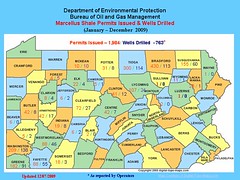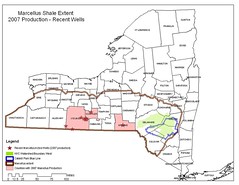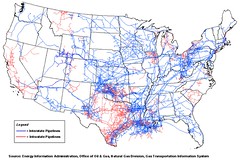By DAVID THOMPSON
SunGazette.com
Nov. 21, 2009
Although the state already is at the top of the list nationally for structurally deficient bridges, a study of small, municipally-owned bridges in Lycoming County suggests the problem runs far deeper than previously thought.
"We are greatly underestimating our bridge problem," county transportation planner Mark Murawski said Friday, based... on a recently-released study - the Lycoming County Small Bridge Inventory Pilot Program - detailing conditions of the county's 83 municipally-owned bridges less than 20 feet in length.
The study,which is the first of its kind in the state, revealed that 72 percent of those bridges are in fair-to-poor condition, Murawski said.
"This is alarming," he said. "If this is going on in Lycoming County, imagine what it's like in the other 66 counties (in the state). There's probably thousands of them in fair-to-poor condition."
...
The focus on structurally deficient bridges revealed Pennsylvania as having one of the worst situations with almost one out of four bridges being structurally deficient.
The federal government requires all bridges 20 feet or longer to be inspected every two years, Murawski said. However, no inspection is required for bridges less than 20 feet long.
Although PennDOT inspects state-owned bridges from eight to 20 feet in length even though it is not required, no inspection program exists for municipally-owned bridges under 20 feet, Murawski said.
...
The work identified 83 bridges located in 29 municipalities, Murawski said. Loyalsock Township had the most small bridges, with eight.
PennDOT bridge inspectors checked each of the bridges and discovered most were in some stage of deterioration, he said.
One bridge on Klump Road in Hepburn Township was in such bad condition, PennDOT closed it the same day they inspected it, Murawski said.
The program includes recommendations for dealing with the problem.
First, it sets an inspection schedule for the bridges. According to Murawski, bridges in good condition will be inspected every four years; bridges in fair condition, every two years; poor condition, every year.
The county commissioners have included in the 2010 budget $165,000 in county liquid fuels money for the county engineer to perform a more detailed inspection next year of all the bridges on the list, he said.
Some bridges are on school routes, he said. Others are on roads used by the natural gas industry, he said.
"The (gas industry) is using a lot of local, rural roads and they're bringing in extremely heavy equipment," he said. "They're crossing bridges that nobody is looking at, carrying extremely heavy loads with large convoys of vehicles."
"In my opinion, we're doing this just in time because of the increase in gas drilling," Murawski said.
The program has garnered interest on the state and national level, Murawski said.
A state task force is reviewing the program, which is already being expanded to northern tier counties, he said.
For full story, CLICK HERE.
DEMAND ACCOUNTABILITY!



















No comments:
Post a Comment